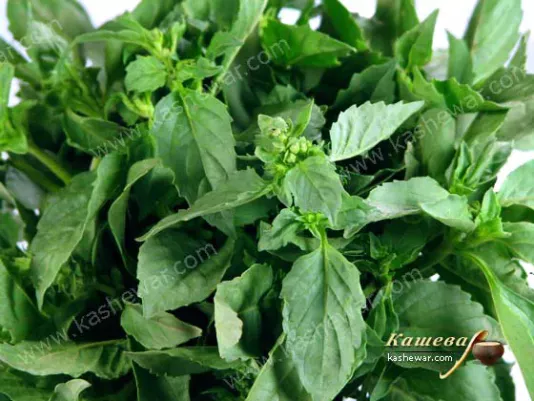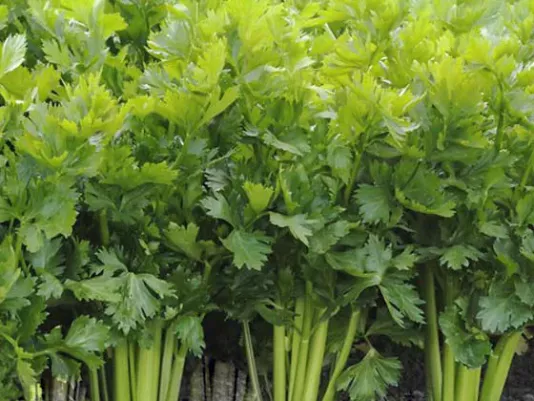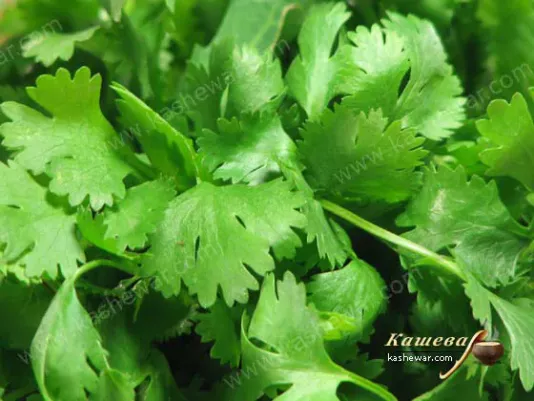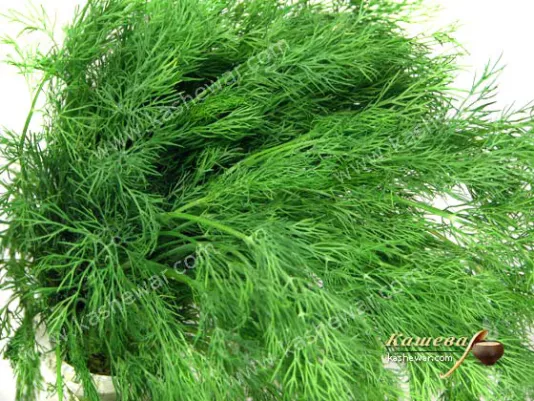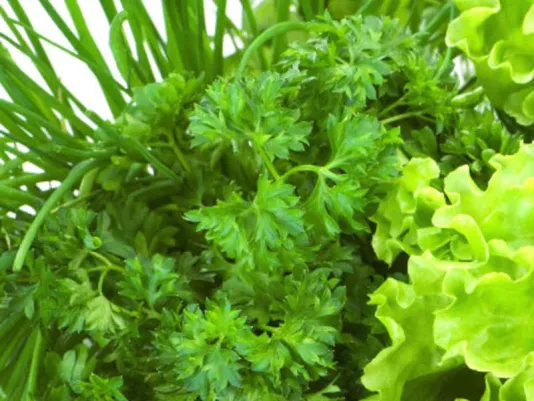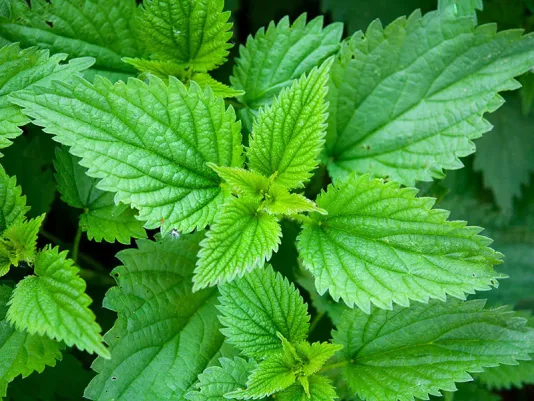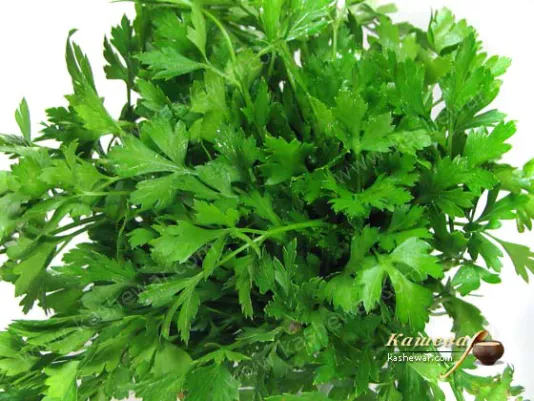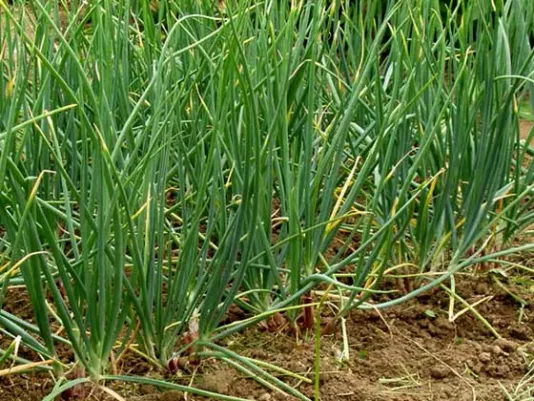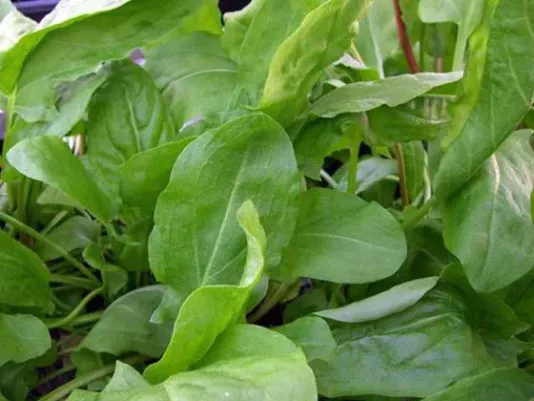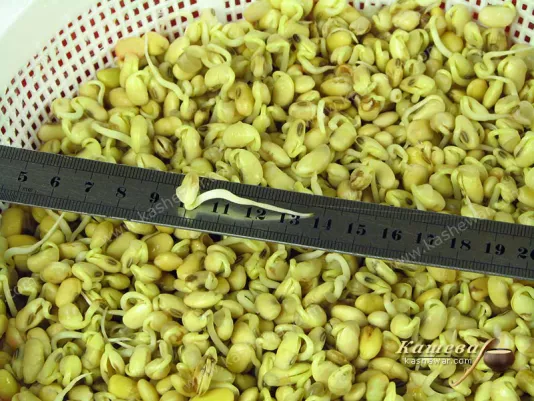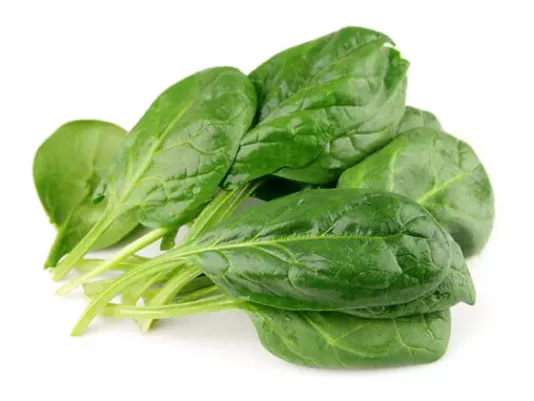Various Greens
Greens have always been an essential part of my cooking, as they bring freshness, natural aroma, and brightness to dishes. I often use parsley because it makes soups lighter and salads juicier. Dill is, for me, the classic companion to fish and vegetable dishes, as its aroma creates a sense of home warmth and comfort. I love basil because it instantly takes me into the atmosphere of Mediterranean cuisine: just a few leaves added to a sauce or pasta, and the dish acquires a new character. Green onions, for me, are a combination of delicacy and mild sharpness – I often add them to spring salads and hot dishes to enhance the flavor. Cilantro, mint, rosemary, or cress help diversify the menu and create new accents even in familiar dishes. I am convinced that fresh greens are not just a garnish but a real ingredient that defines the flavor balance, making dishes healthier, more attractive, and memorable.
Different Types of Greens
Parsley as a Universal Base
Parsley has always been the first green I learned to use in the kitchen. It is so simple, yet very versatile. I love adding fresh parsley to soups – even a small handful of finely chopped leaves makes the broth more aromatic and gives it a brighter look. In salads, it pairs beautifully with cucumbers, tomatoes, and green onions, creating a sense of freshness and lightness. I especially love using parsley together with lemon juice or olive oil – it makes an excellent dressing for salads and appetizers. The root of parsley is also important to me: I put it in broths, and it creates a deeper, richer flavor that is hard to replace with another ingredient. I like that parsley is rich in vitamins and minerals, making every dish with it healthier. I often dry or freeze parsley to have it on hand all year round, so even in winter my dishes have the aroma of summer. This simple yet valuable product is, for me, a symbol of everyday cooking, combining health benefits and taste in the best way.
Dill and Its Special Aroma
Dill, for me, is a true symbol of home cooking, as I recognize its aroma instantly, and it always brings back pleasant memories. I mainly use it in fish and vegetable dishes because it perfectly highlights their flavor and makes the dish more harmonious. For example, boiled potatoes with dill and a little butter have always been one of my favorite side dishes that need nothing extra. In soups, dill creates a special mood: even the simplest vegetable soup with a handful of fresh dill immediately becomes fragrant and appetizing. I also love adding dill to vegetable marinades, as it gives them expressiveness and lightness. In summer, I often freeze dill so that in winter I can add it to hot dishes and bring a touch of the warm season back to my kitchen. I like that dill, despite its simplicity, always knows how to make a dish special – it gives it that characteristic aroma associated with home comfort, tradition, and warmth.
Basil and Mediterranean Notes
Basil, for me, is the green that always brings the aroma of summer and Mediterranean dishes to the kitchen. I love using it fresh, adding leaves to salads with tomatoes and mozzarella, where it creates the perfect balance of flavors. For pasta, I often make classic pesto with basil, olive oil, garlic, and nuts – and this simple combination turns ordinary pasta into a real delicacy. I also like adding basil to tomato sauces, as it makes them richer and more aromatic. I experiment with baking: a few basil leaves with vegetables or meat add a fresh, herbal note to the dish. Fresh basil also works wonderfully in drinks: basil with lemon and sparkling water makes a refreshing beverage on a hot day. For me, basil is the green that can bring bright impressions even to simple dishes, and I always try to keep it on hand to easily create aromatic and flavorful inspiration in the kitchen.
Green Onions in the Daily Menu
Green onions, for me, are the simplest yet very important ingredient that I use almost every day. They add a mild sharpness and freshness to salads, making them more expressive and appetizing. I especially love combining green onions with cucumbers, eggs, or potatoes, as these dishes always turn out light and nutritious. In soups, they create an extra layer of aroma, and even the simplest broth gains new flavor shades with them. I often use green onions in hot dishes – I add them to omelets or stewed vegetables, as they make them juicier. In spring, green onions are, for me, a true symbol of the season, when I want more fresh products, and I gladly use them in any dish. I like that they not only add flavor but also enrich the body with useful substances, particularly vitamins, which are especially needed after winter. For me, green onions are a real helper in the kitchen, always making dishes tastier and brighter.
The Benefits and Variety of Greens
Greens, for me, have always been more than just a garnish – they give dishes a complete flavor, make them more aromatic, and healthier. I am convinced that fresh greens enrich the body with vitamins, trace elements, and fiber, helping to maintain energy and well-being every day. Parsley is good for digestion and works well in light dishes, dill contains essential oils that give it a unique aroma, while basil is rich in antioxidants and creates a feeling of freshness. Green onions help strengthen the immune system, and mint or cilantro add special notes even to the simplest combinations. I love experimenting with different types of greens, creating new combinations, and discovering unusual accents in familiar dishes. For me, greens are also a symbol of summer, as they remind me of sunny days and the freshness of the garden. They always make my kitchen brighter and inspire me to create dishes that are both healthy and delicious.

